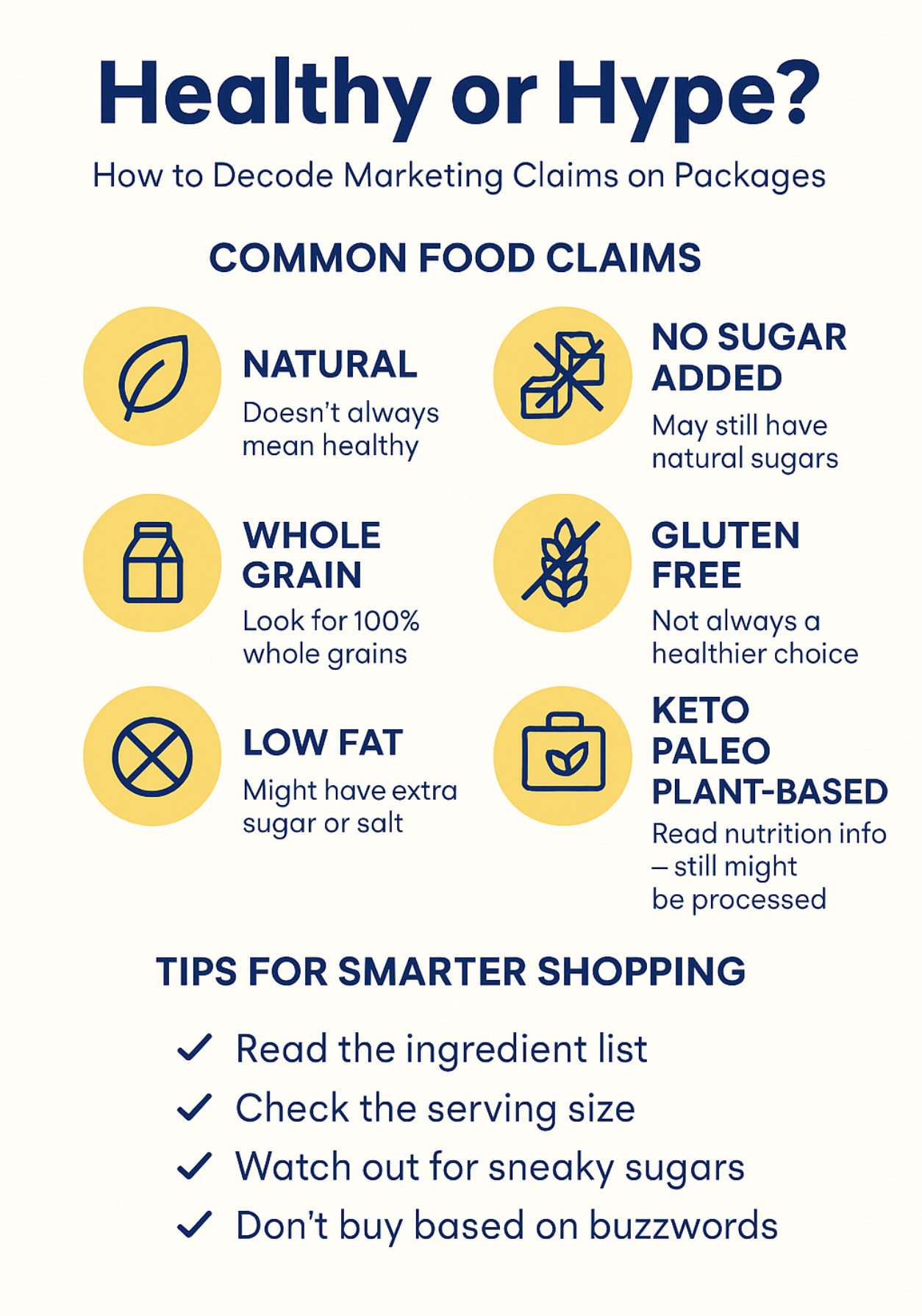Walk through any grocery store and you’ll see it—labels shouting “natural,” “low fat,” “whole grain,” or “no sugar added.” But do those words really mean the food is healthy? Not always.
Food companies know how to make their products sound good, even if they’re not. Here’s how to see through the hype and find what’s actually good for you.
6 Common Food Claims and What They Really Mean
- “Natural”
This word sounds healthy, but there’s no strict rule for what “natural” means. A product can still be processed or full of sugar and salt. Instead of trusting this word, check the ingredient list. Fewer ingredients and ones you recognize are usually better. - “No Sugar Added” or “No Artificial Sugars”
These labels can be misleading. “No Sugar Added” doesn’t mean the product is sugar-free — it may still contain natural sugars from fruit, milk, or other ingredients. “No Artificial Sugars” means the sweeteners come from natural sources like fruit juice, cane sugar, honey, syrups, or coconut sugar. But in the end, your body processes all sugars (natural or refined) similarly, and they still affect weight and blood glucose. A better choice is to look for “Unsweetened” on the package, and check the nutrition label for 0g added sugar per serving. - “Whole Grain”
Some products say “made with whole grains” even if most of the grains are still refined. Look for the words “100% whole grain” on the package, and check the ingredient list—“whole wheat” or “whole oats” should be one of the first ingredients. - “Low Fat” or “Fat-Free”
These sound good, but some low-fat foods are loaded with sugar or salt to make up for the flavor. Your body actually needs some fat to absorb vitamins and feel full. Check the full label and don’t be afraid of healthy fats like those from nuts, seeds, and olive oil. - “Gluten-Free”
Unless you have celiac disease or gluten sensitivity, gluten-free doesn’t automatically mean healthier. Some gluten-free products are high in sugar, starch, or processed ingredients. - “Keto,” “Paleo,” or “Plant-Based”
These diet buzzwords are trendy, but they don’t always mean healthy. A “plant-based” cookie can still be full of sugar and oils. A “keto” snack might be high in saturated fat. Read the nutrition label to see what’s really in it.

Tips for Smarter Shopping
- Read the ingredient list – Look for short lists with whole-food ingredients you know.
- Check the serving size – Some packages seem healthy until you see how small the serving really is.
- Watch out for sneaky sugars – Sugar hides under many names, like corn syrup, cane juice, fructose, or honey.
- Don't buy based on buzzwords – Just because something says “healthy” or “clean” doesn’t mean it’s right for your health goals.
.jpg)
Bottom Line
Food marketing is designed to grab your attention—not always to help your health. If a label sounds too good to be true, flip it over and look at the facts. Reading nutrition labels and ingredient lists is the best way to know what you’re really eating.
When in doubt, ask your health coach or dietitian—we’re here to help!



